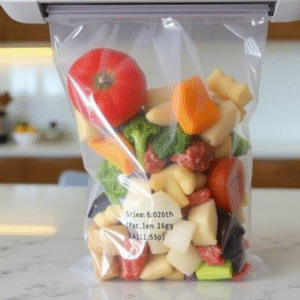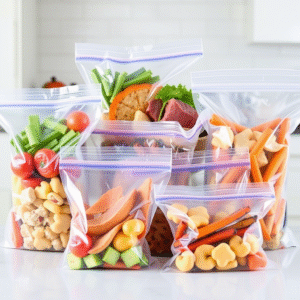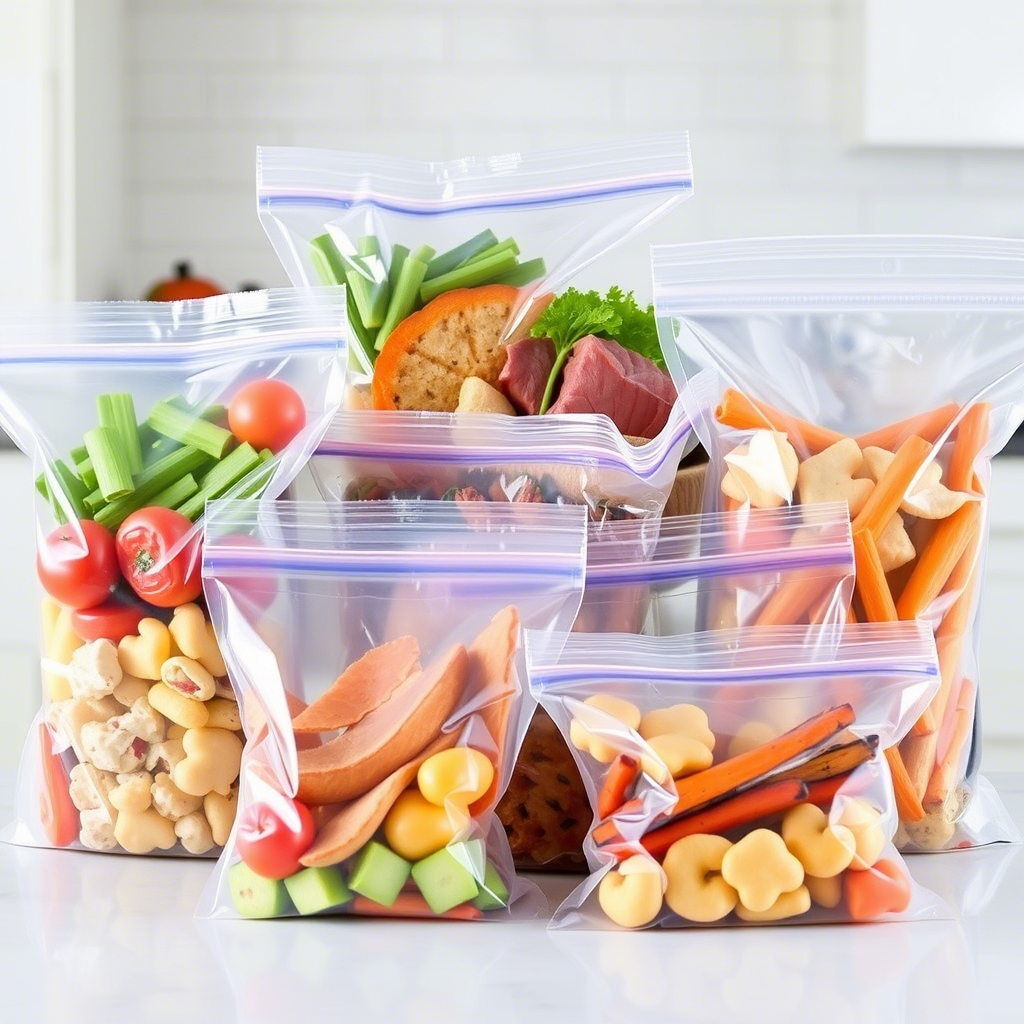We all use food packaging bags daily—whether storing leftovers, packing lunches, or freezing meals. But have you ever stopped to think about which type works best for different foods? Or how your choice impacts freshness and the environment?
This guide will walk you through the different types of food packaging bags, their benefits, and how to pick the right one for your needs.

1. Types of Food Packaging Bags
Not all bags are created equal. Some keep food fresh longer, while others are better for the planet. Here’s a breakdown:
A. Plastic Bags
- Polyethylene (PE) Bags – The thin, crinkly bags you get at grocery stores for produce or bread. Cheap and lightweight, but not great for long-term storage.
- Polypropylene (PP) Bags – Sturdier, often used for snacks like chips or crackers. Some are microwave-safe.
- Vacuum Sealer Bags – Thick, heavy-duty plastic designed to remove all air, keeping meat and veggies fresh for months in the freezer.
Tip: If you’re freezing meat, vacuum-sealed bags prevent freezer burn way better than regular plastic.
B. Eco-Friendly Options
- Compostable Bags – Made from plant materials (like cornstarch). Great for food scraps, but check if your city actually composts them.
- Silicone Reusable Bags – Like Stasher bags—pricey but last years. Perfect for meal prep and reducing waste.
- Paper Bags – Best for dry goods (flour, grains) but not liquids or freezer use.
Fun fact: Some “biodegradable” bags only break down in industrial composters, not your backyard pile.
C. Specialty Bags
- Aluminum Foil Bags – Block light and air, ideal for coffee or chips.
- Stand-Up Pouches – Those shiny bags for nuts or pet food. They keep contents fresh and are easy to reseal.
2. Why the Right Bag Matters
Ever opened a bag of salad to find it wilted after two days? Or pulled freezer-burned chicken from the back of your freezer? The right packaging makes a huge difference.
✅ Keeps Food Fresh Longer
- Vacuum-sealed meat lasts 3x longer in the freezer.
- Bread stays soft in a zipper bag (vs. drying out in a twist-tie bag).
✅ Saves Money & Reduces Waste
- No more tossing spoiled food because it wasn’t stored properly.
- Reusable silicone bags mean fewer single-use plastics.
✅ Better for the Planet (If You Choose Wisely)
- A single silicone bag replaces hundreds of disposable ones.
- Compostable bags break down naturally—if disposed of correctly.

3. How to Pick the Best Bag for Your Needs
For Freezing:
- Vacuum-sealed bags are the gold standard for meat, fish, and veggies.
- Heavy-duty zipper bags work if you squeeze out as much air as possible.
For Lunch & Snacks:
- Reusable silicone bags for sandwiches, cut fruit, or nuts.
- Small zipper bags for portioned snacks (but try to wash and reuse them).
For the Environmentally Conscious:
- Compostable bags for food scraps (if your city accepts them).
- Silicone or cloth bags instead of plastic wrap.
Pro tip: If you use plastic bags, rinse and reuse them a few times before recycling.
4. Common Mistakes to Avoid
❌ Using the wrong bag for the job – Flimsy produce bags won’t protect food in the freezer.
❌ Not sealing properly – Air = faster spoilage. Press out excess air before sealing.
❌ Assuming all “eco-friendly” bags are equal – Some need special composting facilities.

5. The Future of Food Packaging
Innovations are making packaging smarter and greener:
- Edible packaging (like seaweed-based wraps for snacks).
- Smart labels that change color if food goes bad.
- More compostable options that actually break down at home.
Final Thoughts
Food packaging bags might seem simple, but choosing the right one can save you money, reduce waste, and keep food fresher longer. Next time you reach for a bag, think: “Is this the best option for what I’m storing?”
Quick Action Tip: Try swapping just one type of disposable bag in your kitchen for a reusable option this week. Small changes add up!


